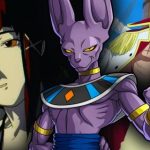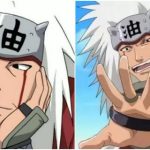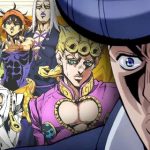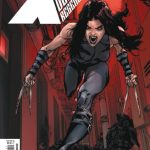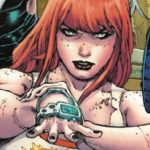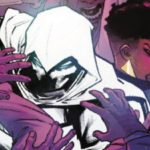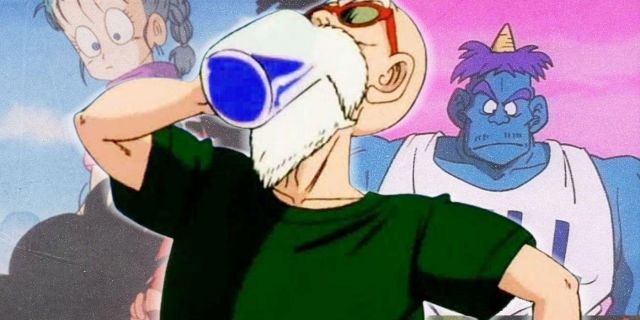Dragon Ball has a rather odd history concerning censorship in both America and Japan. Distributors in both countries seem to have been torn on which demographic to appeal to, and the best way to do so. Additionally, social standards have changed dramatically in the decades that the franchise has been around. Thus, whenever the time comes to make a decision about censoring the series, the results have been inconsistent, to say the least.
Something is fascinating about the way this presentation of the series has changed over time. A lot of the censorship techniques seem to have either built on or branched off of each other. They all function to create different interpretations of the same story depending on the target audience.
How Was Dragon Ball Censored?![dragon ball Baby Goku's nudity covered by a table in <a href=]() Dragon Ball” height=”900″ src=”https://static0.cbrimages.com/wordpress/wp-content/uploads/2018/03/Dragon-Ball-Censor-Goku-Cover-Up.jpg” width=”1800″/>
Dragon Ball” height=”900″ src=”https://static0.cbrimages.com/wordpress/wp-content/uploads/2018/03/Dragon-Ball-Censor-Goku-Cover-Up.jpg” width=”1800″/>
There were a few dubs of Dragon Ball done by Harmony Gold, BLT, and Blue Water. However, the one most fans are familiar with is the Funimation dub that aired in the early 2000s on Toonami. Some things were maintained for the home release, but these dubs largely kept their dubs PG at the worst, maybe higher depending on how nudity is counted.
Speaking of nudity, scenes involving it were handled carefully in the Toonami run of Dragon Ball. This can sometimes apply to women’s breasts, but it’s especially relevant for kid Goku, who often had his lower half exposed. Scenes like these were either censored or removed entirely.
Master Roshi’s pervertedness is also severely toned down in the dub. His unwanted advances are sometimes kept intact, but his dirty talk is made a lot milder even in the unedited dub, while some shots of him getting a nosebleed are censored or removed.
Certain scenes of violence are also censored. This includes Roshi getting struck by women for his excessive lechery and King Piccolo choking King Furry. These kinds of violence have a more grounded feel to them that makes them feel as though they could happen in real life, which is likely why they’re heavily regulated.
Besides this, many of the basic virtues of censorship in kids’ shows are upheld. This includes the removal of swearing, excessive violence and blood, religion, alcohol, and potential homosexuality like General Blue’s. Anything that could be construed as controversial was made less so when it was aired on TV. Some of this content made it into the home releases, though the mildly dubbed language couldn’t be changed that much. In general, this series was safe enough to show to minors.
How Was Dragon Ball Z Censored?
While the original Dragon Ball came out first chronologically, it was preceded in the US by an older dub of Dragon Ball Z. This edited version originally aired in 1996 and was known as the Ocean dub. In addition to a Canadian cast of actors, the Ocean dub differed from the Funimation dub in how it handled DBZ’s more explicit content.
This dub censored a lot of the same things as the Toonami run of Dragon Ball; nudity, blood, swearing, excessive violence, Roshi’s perviness, and so on. However, some aspects of Ocean’s censorship took things a little further.
The Ocean dub also infamously removed any references to death. Rather than dying or being killed, people were “sent to another dimension;” (hilariously, certain characters pronounce it “die-mention,” effectively defeating the purpose of the censorship). Some killings like Nappa leveling a city or blowing up “cargo robots” were also changed to suggest that the people survived. They also removed some of the corpses like Piccolo’s and Yamcha’s.
Some of the regular violence of the show was covered up in addition to the excessive violence. There would be direct cuts to characters getting knocked away, as well as brief flashes and “censorship stars” to cover up the moment of impact. Impalements and decapitations were also removed.
The original Funimation dub for DBZ began around the time Goku arrived to battle Recoome. From here, the censorship philosophy was more in line with what was shown for the original Dragon Ball dub. Or, more accurately, since DBZ aired before Dragon Ball in the US, it’s Dragon Ball‘s censorship philosophy that mimics DBZ’s. Thus, while a lot of scenes of violence, Roshi’s perviness, and the occasional middle finger were removed from the Toonami airing, they were maintained for the home releases of the series (but they still couldn’t swear).
How Was Dragon Ball Z Kai Censored?
Dragon Ball Z Kai has an especially hectic history of censorship. Due to being broadcast on different channels at different times, there is an uncensored version of the series, a partially censored version, and a fully censored version.
When the show was making its first rounds through the US, the partially censored and fully censored versions were the ones that first premiered on the Nicktoons channel and the CW’s Toonzai block, respectively. Both of these series removed the crude language, violence, nudity, and middle fingers that were present in the Japanese version of this DBZ revisal. They also took similar approaches to censor blood like painting over it or making it seem like the characters were instead coughing up spit. This kind of censorship was in line with what American audiences were seeing in the early 2000s.
However, the Toonzai version took its censorship a little further than Nicktoons. All references to death were altered, as were references to the Otherworld as an afterlife; they even replaced the haloes with glowing balls of light. Nicktoons also censored the talk about life and death, but they were a little laxer about it; characters, for example, could still be referred to as dead while they were in Otherworld.
The uncensored version of Kai wouldn’t be presented in the US until much later. This version had all the blood, violence, and references to death from the original series left intact. It also included swearing and crude language on a level unheard of by English audiences. This version of the show would make its American television debut on the revived Toonami block in 2014.
Is Dragon Ball Super Censored?
What’s funny about the American censorship of Dragon Ball is how it seems to have influenced the modern presentation of the franchise in Japan. This is especially apparent in newfound censorship in Dragon Ball Super; fewer characters die horribly or get seriously injured, there isn’t as much blood, Master Roshi isn’t as perverted, and nobody gives anybody the finger anymore. This all seems to be a way to not only appeal to a younger demographic but also to better adhere to modern sensibilities.
Despite all this, Dragon Ball Super is still aimed at older audiences in the US. Not only is the language not toned down, but the characters swear just as much as they did in the uncensored version of Dragon Ball Z Kai, As far as viewers in the US are concerned, Dragon Ball Super gets the TV-14 rating the series was always meant to have. That said, Dragon Ball Super: Broly did manage to earn a PG rating.
Of course, the true essence of Dragon Ball manages to shine through even with all this censorship. It will always be a great action series with material that leaves audiences wondering whether it’s okay to show to children. Whatever the answer to that question, Dragon Ball will continue to be entertaining to people of all age groups. At the very least, censorship can be thanked for making the series more accessible to those younger audiences and letting them choose for themselves.
